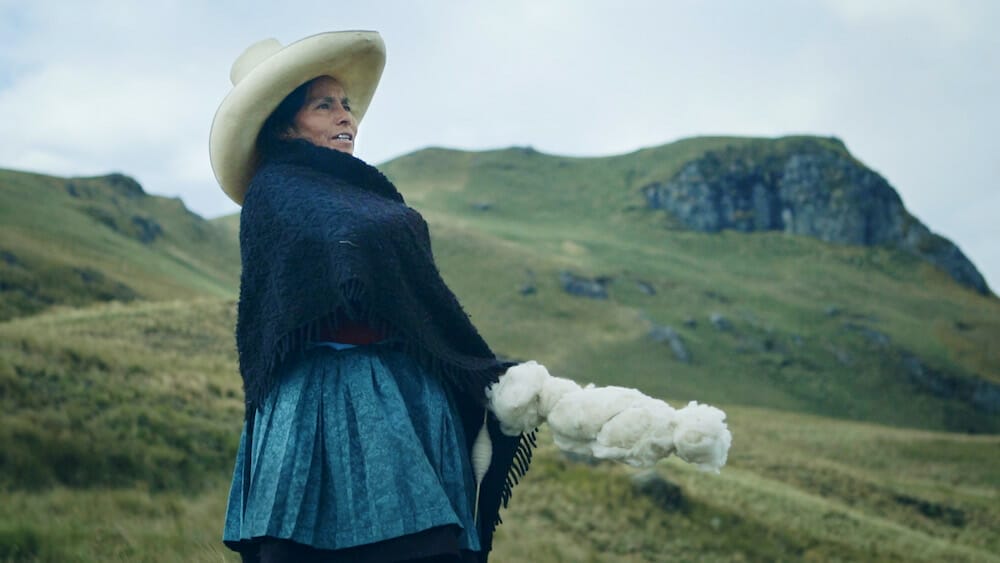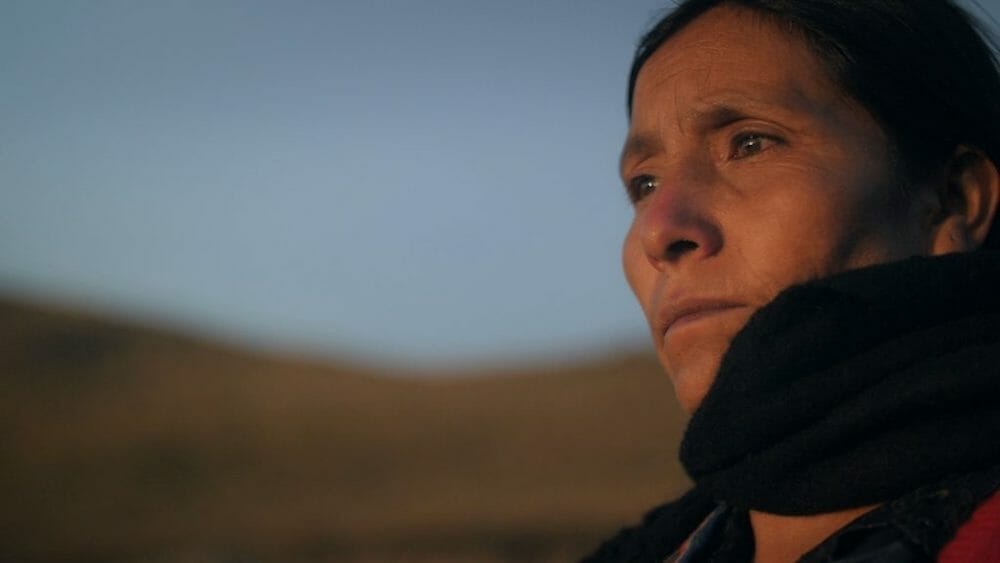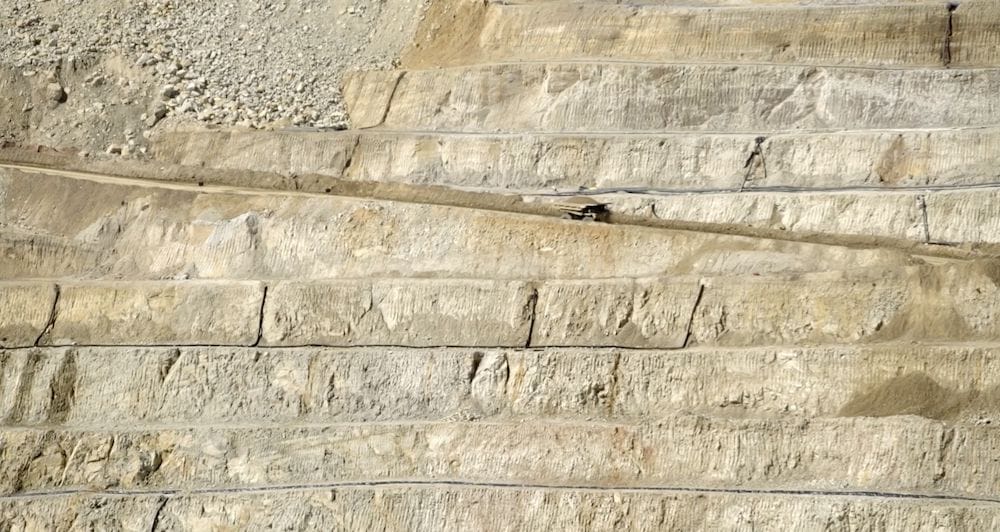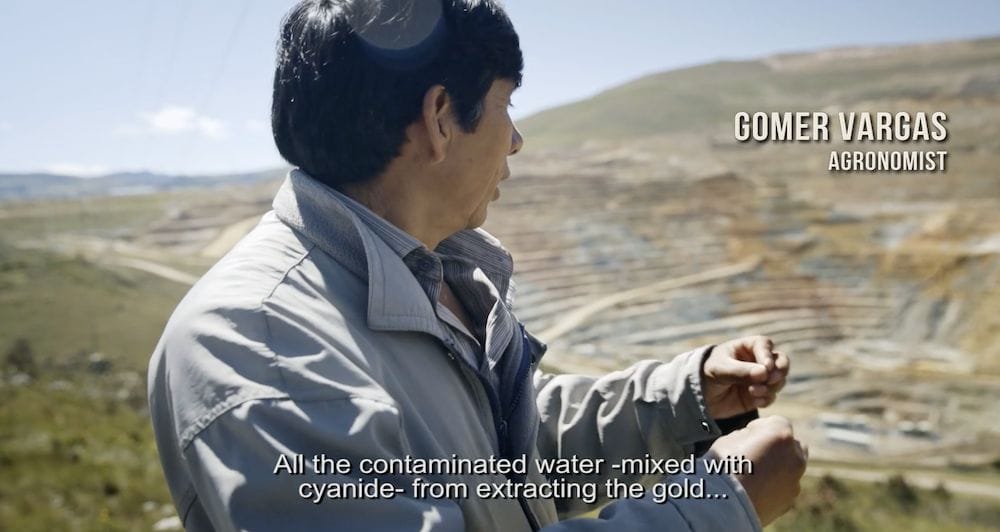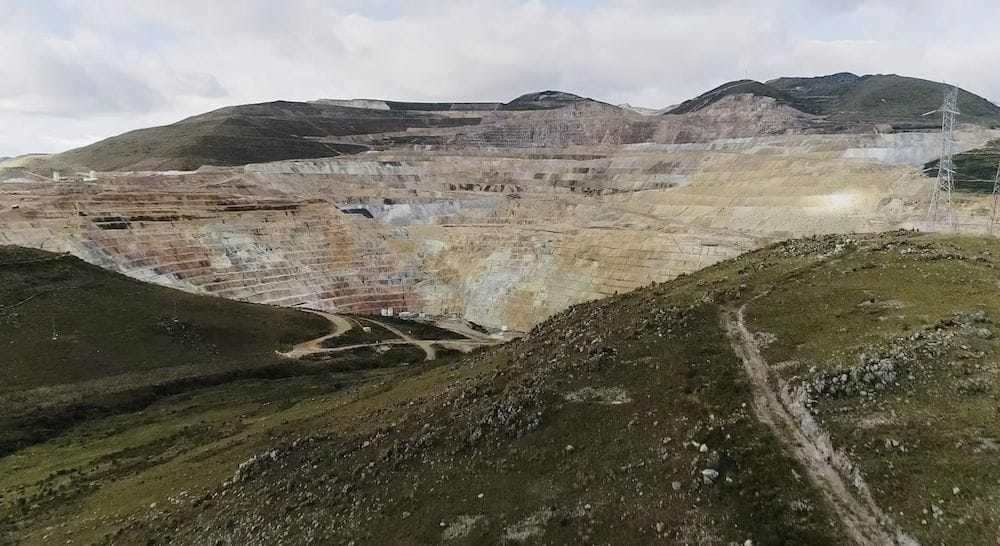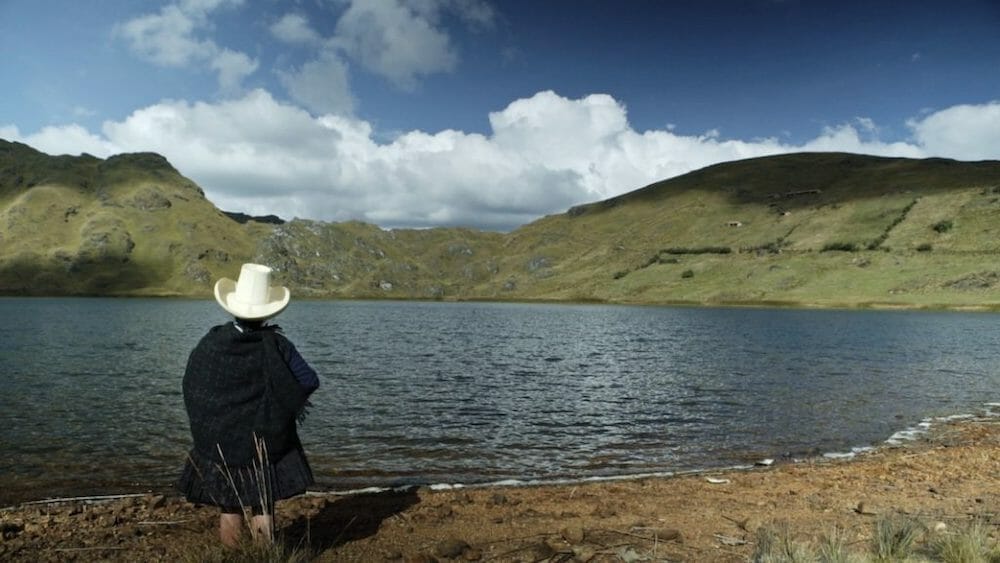MAXIMA begins with stunning views of the sweeping Peruvian highlands. Aerial footage takes viewers through the Andean mountainside with clear blue lakes and lush forests. Daylight streams through wispy, low hanging cirrus clouds while birds sing in chorus with orchestral music. After scenic naturistic establishing shots, we encounter a pensive native woman whose face is lit by the burnt orange of a setting sun. This woman is Máxima, standing on a hill as she surveys the land she calls home.
After the sun sets over Tragadero Grande, the filmmakers bring us to a new morning and new landscape. Just beyond the cyan colored water reserves are open-pit mines surrounded by arid, lifeless land. These industrial mines are dug deep into the mineral rich rock, like pyramids turned on their heads. The narration informs us: Peru has some of the most relaxed climate guidelines for mining corporations. This is part of why Newmont and Buenaventura Mining Companies desire to expand their territories in the countryside. They, like many others, embrace the ease of exploitation – as evidenced by the desert in the midst of the rolling prairies. Máxima’s land is a jackpot of precious mineral.
Sitting at the foot of the Andes and not far from the ravaged land, the director provides sun-spotted footage of the local communities. Their houses are spread few and far between; with lush prairies providing fodder for roaming cattle, alpacas and sheep. Many of the Andeans wear bright woolen clothing like Máxima. Sourced from the livestock and sold at the bustling markets in Cajamarca, the clothing is an essential source of income for the people. While many women at the market wear hats, Máxima’s tall white sombrero is unique. Like a cowboy hat with a broad rim, the hat distinguishes her style, skill and status as a Peruvian woman.
MAXIMA Against the Corporate Machine
After the tranquility of the Peruvian Sierra, we are shown timestamped images of a battered Máxima. Bruised all over her body, she looks at the camera with distress and deflation. Through a title card, we learn that Máxima will give us her accounts of the gold and copper mining companies’ violent attempts to evict her from her property.
Rough handheld footage shows Peruvian police approaching Máxima’s property. Armed with riot gear, they form a barricade across the dirt road.
Behind them, a bulldozer sits, intending to tear up the land. In front of the police, Máxima’s family has gathered to protest peacefully. Very suddenly, the conflict escalates when one of the officers pulls a machine gun out and points it toward an irate man.
The footage pauses with Máxima informing us she throws a stone at the armed official to distract him. Off camera, the police took out their batons to beat her and her daughter. The rough footage taken after the beating shows Máxima shouting and crouching over her daughter who lays unconscious in the dirt.
Máxima's story speaks to the daily struggle of indigenous peoples as they fight to protect their land and communities. Whatever the outcome may be for Máxima will set precedent internationally for the treatment of indigenous landowners. This documentary depicting Máxima’s ongoing struggle will interest those who fight for environmental integrity, human rights and legal justice in cases of the individual versus corporation. If you wish to learn about this landmark human rights case, visit StandwithMaxima.com.
RECOMMENDED
Nominate this for The Picture This Post BEST OF 2020???
Click Readers' Choice
Vote Securely! Vote Privately! And Make Your Vote Count-- as all voting should be!!
For more information and to view the movie visit the MAXIMA film website.
CREATIVE TEAM:
Directed by Claudia Sparrow, produced by Claudia Sparrow and Ryan Schwartz.
Executive producers: Lesley Chilcott, Leandro Marini, Louise Runge, Steven J. Berger, Scott Dixon and Susan Bay Nimoy.
Cinematography by Philip Knowlton, Magela Crosignani and Leandro Marini.
Edited by Alejandro Valdes-Rochin.
Original Music by Mauricio Yazigi.
Images courtesy of MAXIMA film
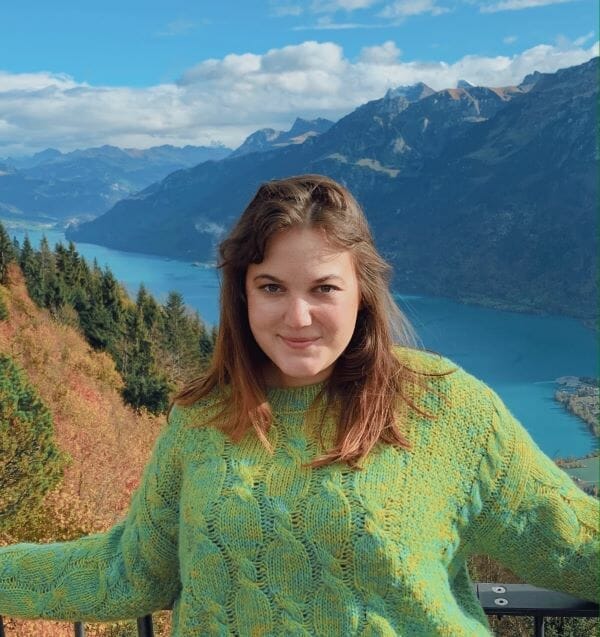
About the Author: Camille Aguilar
Camille is a senior at the University of Chicago where she studies Literature and Philosophy. There, she is a reporter for the Maroon, as well as a photographer for the student run culinary magazine: Bite. Her activism extends largely towards youth education, and she is currently an organizing executive of MUNUC the Model United Nations conference put on by UChicago students for over 1,500 international high school students annually. After college, Camille plans to continue writing creatively and professionally as she pursues a career in international human rights reform.

